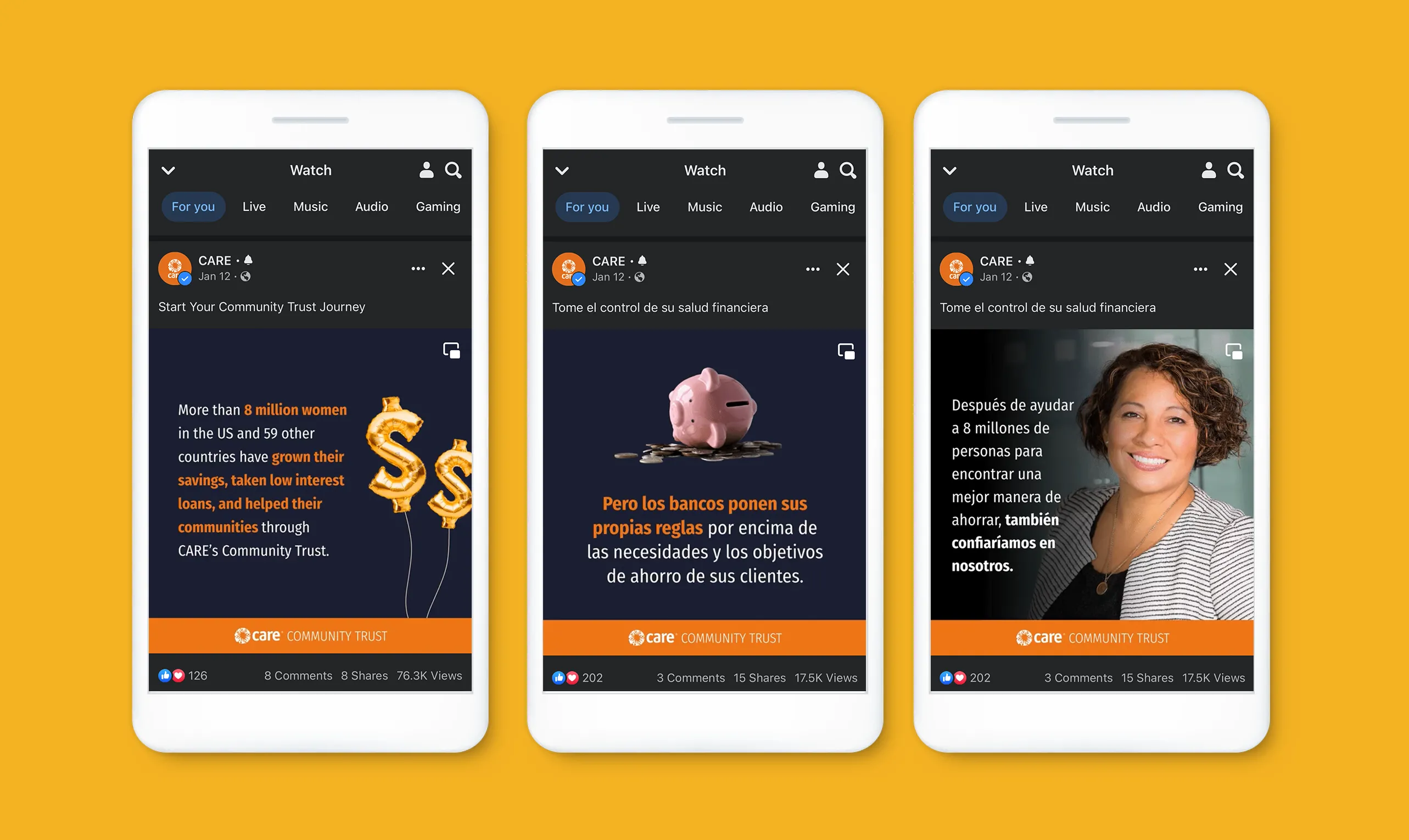TL;DR:
- Context: CARE wanted to test social media as a tool to increase knowledge of and interest in cooperative savings groups among target populations of women in Atlanta, Houston, and L.A.
- Results: CARE’s campaign increased the number of Spanish-speaking women in L.A. who believed that Community Trusts were beneficial for connecting people who care about improving their financial health by +2.4 points but did not see a change among target populations in Atlanta and Houston.
- Key learnings: Testimonial-style ads performed best; Interest-based targeting, such as an interest in ‘entrepreneurship’ might augment geographic targeting; and more work is needed make cooperative savings socially normative in the United States.
In many countries around the world, CARE is known for its Village Savings and Loan Associations (VSLAs). VSLAs are cooperative savings groups that empower women economically and socially. Participating women around the world save together, lend to one another to fund entrepreneurial endeavors and, in doing so, build their communities. By 2030, CARE’s goal is to support 50 million women and girls – and 65 million people overall – in forming savings groups.
CARE wanted to see if we could improve knowledge about and attitudes towards the idea of cooperative savings groups among our target participant groups in Atlanta, Houston, and LA. We wondered if boosted posts could increase interest from women in these markets to learn more and engage with Community Trusts to enjoy the same benefits seen outside the U.S. We also wondered what types of messages would be most effective in increasing interest from women to learn more.
To test this, CARE created a series of different campaign ads focused on increasing women’s belief that Community Trusts could help them build the financial skills and a supportive network to access financial freedom. Key messages communicated three key themes: building financial skills; acquiring a supportive network; and accessing financial freedom. The ads incorporated statistics, testimonials and coaching intended to boost awareness of and trust in the CARE Community Trust brand and underscore the value-add of these groups over other savings mechanisms that exist in target communities. Our ads ran in English in Atlanta and Houston and in Spanish in Los Angeles.
Over the course of the 4-week campaign (January 4 – February 9, 2022), CARE’s Community Trust ad set reached 1.6M women in Atlanta, Houston, and Los Angeles through advertising across Facebook and Instagram.

